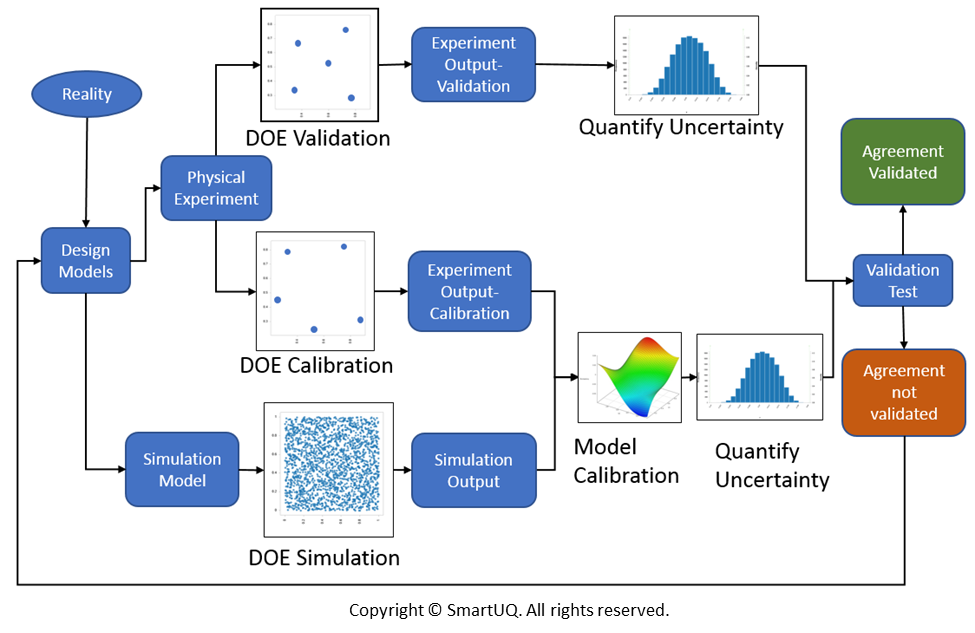From design to implementation, uncertainty can be found throughout the medical device industry. As no two patients are the same, engineers and managers need to know how the device functions under multiple operating conditions with an acceptable level of confidence. Other uncertainties can come from manufacturing variations such as imprecise equipment, varied raw material properties, and heat treatment processes. These variations lead to uncertain performance and may result in compromised parts or decreased service life. Uncertainty Quantification (UQ) can be used to better understand, manage, and reduce these potential sources of uncertainty for more efficient device design, manufacture, and maintenance, and to improve the safety and effectiveness of the device.
To adequately perform Verification and Validation (V&V) for a design as suggested in the FDA guidance, these simulations must be done under a variety of operating conditions to account for uncertainties like patient-to-patient and manufacturing variability. Very large simulation batches are necessary to acquire an adequate number of samples for statistically significant analyses such as sensitivity studies and input uncertainty propagation. Also, trade-off studies and design space exploration require numerous simulation runs to capture QOI responses to changes in design parameters. Both initial design studies and V&V design thus often necessitate high performance computing (HPC) resources and substantial computation time. Fortunately, there are advanced analytics tools like SmartUQ that can help reduce the computational burden of modeling in the medical device industry.
SmartUQ can be used in the design of new devices or the analysis of existing devices, from pacemakers and hip implants to MRI machines. SmartUQ provides guidance on testing and sampling as well as predictive models which complement high fidelity simulations and physical testing. These predictive models, i.e., emulators, are trained using a minimal number of simulation or physical test runs and can then be used to predict at new operation points. These emulators can accurately handle complex nonlinear behavior and high dimensional systems faster than previous solutions, without resorting to HPC. SmartUQ has a variety of emulator types developed to handle complex data types including high-dimensional inputs, functional or transient responses, point cloud or mesh data, and discrete inputs.
With the push for V&V, a number of leading organizations have formed dedicated medical device V&V working groups. These include the American Society of Mechanical Engineers’ (ASME) subcommittee V&V 40, which provides standardized medical device V&V procedures. In fact, ASME V&V 10 have developed a validation workflow as shown in the below chart. This workflow incorporates uncertainty analysis to validate the simulation model across all possible scenarios. SmartUQ’s tools including DOEs for calibration of a simulation model with physical data, statistical calibration, sensitivity analysis, and uncertainty propagation, are the building blocks of the V&V workflow.
 Figure 2: The Verfication & Validation workflow
Figure 2: The Verfication & Validation workflowEach picture represents a feature of the SmartUQ software that can be integrated with a simulation tool to form the V&V workflow.
Adopting the V&V workflow can have the effect of not only meeting regulatory requirements but also decreasing the amount of expensive physical testing required in later design stages, reducing the time to market for new products, and increasing the confidence in models and new designs.
To learn more about UQ and medical devices, check out the white paper “Uncertainty Quantification for the Medical Device Industry” which includes an end-to-end coronary stent uncertainty quantification and model validation study.